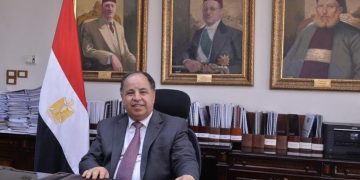By: Hania Moheeb
Nuclear energy and its associated technologies are indispensable for advancing humankind. They provide essential leverage for boosting economic activities and improving the quality of life, making them particularly important for developing countries in their efforts to achieve the sustainable development goals of 2030.
“Peaceful” nuclear energy can contribute significantly to medicine, public health, agriculture, food security, water resources management, sustainable energy, and the environment, among other areas. And to lay the foundation for a wide range of peaceful applications of nuclear technology, investment in nuclear research is essential.
Cooperation in peaceful uses requires resources, knowledge sharing, technology transfer, information exchange, and the adoption of best practices. This area can gain greater momentum and relevance through multilateral international cooperation.
In this regard, Egypt has the opportunity to embark on nuclear research to leverage peaceful applications of nuclear energy for economic growth. The agreements signed over the last decade, aimed at reviving Egypt’s nuclear program, provide a doorway to this much-needed opportunity.
Egypt’s Nuclear Research Efforts
Since the inception of the Egyptian nuclear program, research has been a fundamental component. In 1961, in collaboration with Russian partners, Egypt inaugurated its first research reactor at Inshas.
The Egyptian Atomic Energy Commission, later rebranded as the Egyptian Atomic Energy Authority (EAEA), was established in 1955. This agency serves as a catalyst for Egypt’s nuclear research initiatives, comprising three centers: the Nuclear Research Centre (NRC), the National Centre for Radiation Research and Technology (NCRRT), and the Hot Laboratories and Waste Management Centre (HLWMC). Additionally, it hosts the ETRR-2 (Egypt’s second research reactor) and a cyclotron accelerator.
Efforts Start Bearing Fruits
As a tangible outcome of these efforts, the medical field in Egypt has seen significant advancements in the application of nuclear technology. The National Center for Radiation Research and Technology has made notable progress in recent years by establishing a production laboratory that meets international standards for the production of amniotic tissue extracted from birth placenta at the Atomic Energy Authority.
Through extensive scientific experimentation, the center has successfully produced amniotic tissue and conducted various studies to demonstrate its therapeutic effectiveness and clinical compatibility for patients suffering from conditions such as bed sores, diabetic foot ulcers, and radiation burns. Furthermore, the potential of amniotic fluid in treating facial wrinkles and acne scars has also been explored.
Recently, Rusatom RDS (part of Rosatom State Corporation) and the Egyptian company “Med Pharma Group” signed a “roadmap” for cooperation in promoting the medical device “Tianox” in the healthcare and pharmaceutical market of the Arab Republic of Egypt. The document was signed on sidelines of 13th International Forum «ATOMEXPO-2024».
“Tianox” is a Russian device for nitric-oxide therapy for adults and children (including newborns), an innovative development by specialists of the Russian nuclear industry. The device is used in pulmonology, cardiothoracic surgery, transplantation, neonatology, rehabilitation, and other fields. “Tianox” synthesizes nitric-oxide itself, delivers it to the patient’s lungs, and monitors the concentration. In December 2023, the device received its first international certificate: its use was approved by regulators in Belarus.
Yet another step in such collaboration was taken in June, 2022 when Rusatom Healthcare Joint Stock Company (integrator in the field of radiation technologies for medicine and other industries of ROSATOM) and the leading Egyptian pharmaceutical company Pharco Pharmaceuticals signed a Memorandum of Understanding.
The Memorandum confirmed the intentions of the parties regarding the further development of cooperation and the implementation of joint projects. In particular, the parties agreed to work together on projects of joint development and production of radiopharmaceuticals, conducting pre-clinical, clinical studies, registration and launch of developed products to the market of Egypt, Middle East, Eurasian Economic Union and other countries.
These achievements, alongside numerous others anticipated in the future, not only offer more effective treatments for Egyptian patients but also do so at a considerably lower cost compared to imported medications. This marks a significant step forward in leveraging nuclear technology to address healthcare needs and improve medical outcomes in Egypt.
As Egypt continues to leverage nuclear technology for economic growth and societal development, it stands at the forefront of innovation and progress in the region. The nuclear project serves as a beacon of hope, opening doors to new opportunities and possibilities for advancing Egypt’s nuclear science and technology landscape. With sustained commitment and collaboration, Egypt is poised to realize its vision of a brighter, more prosperous future powered by nuclear innovation.

















































Discussion about this post